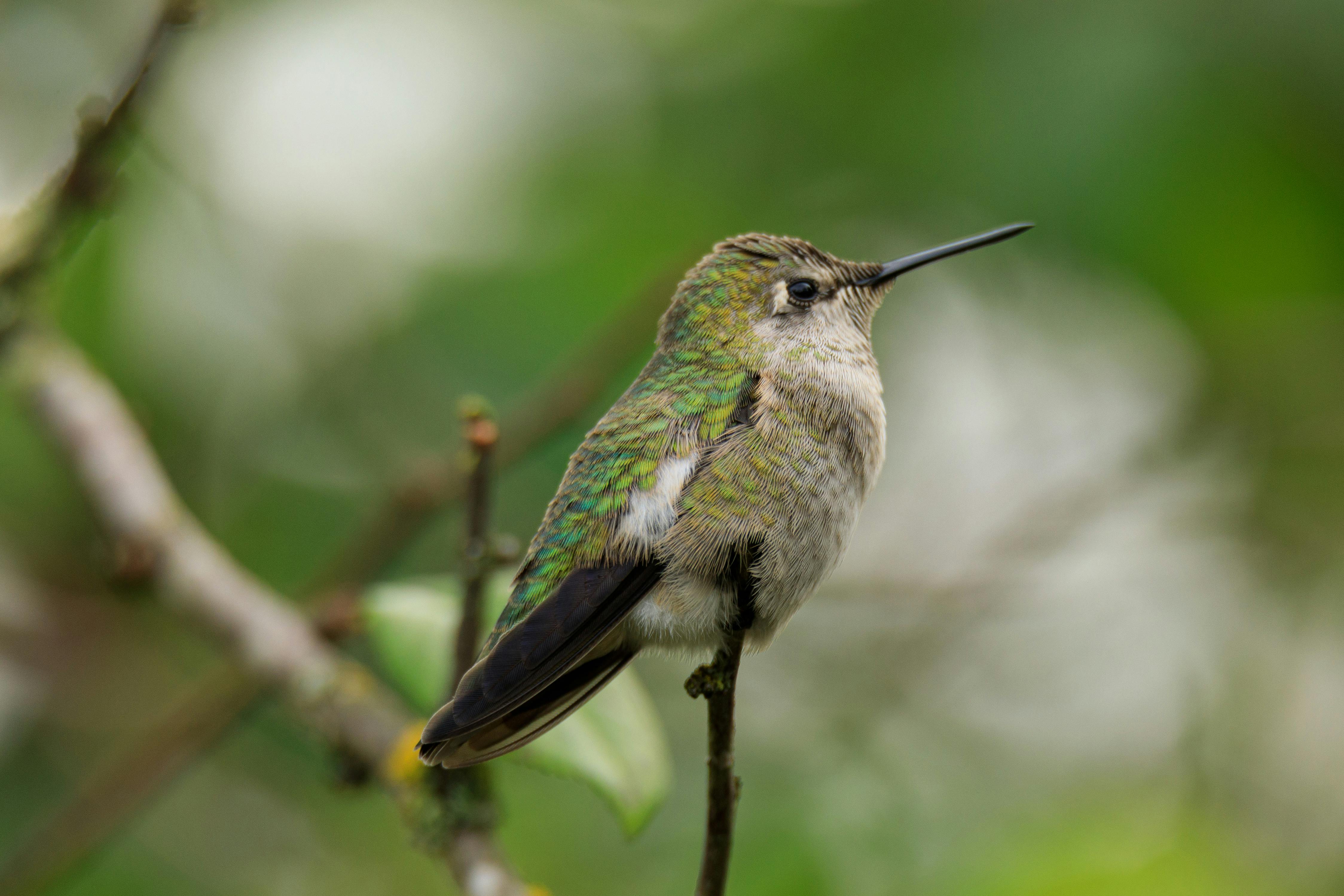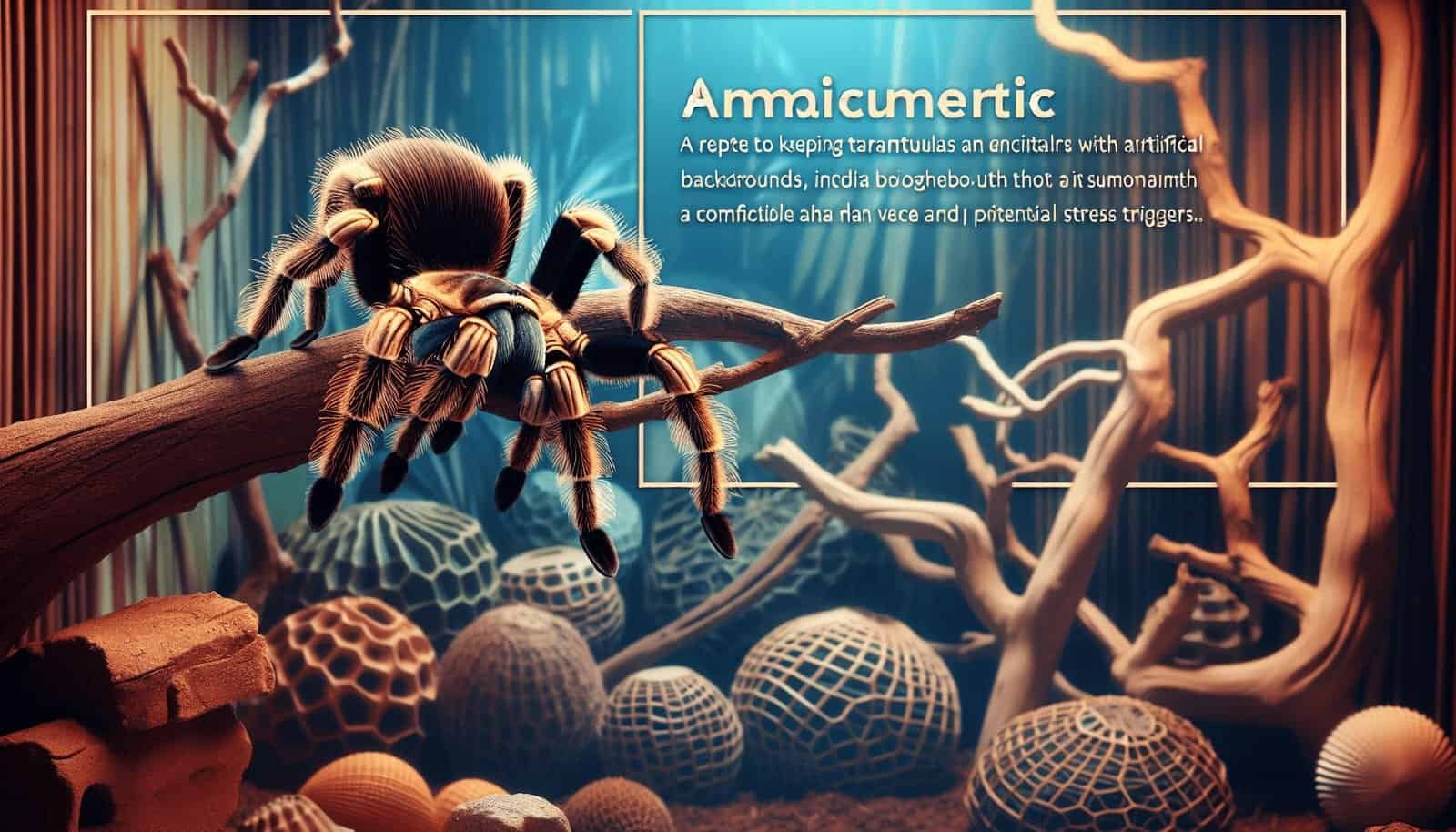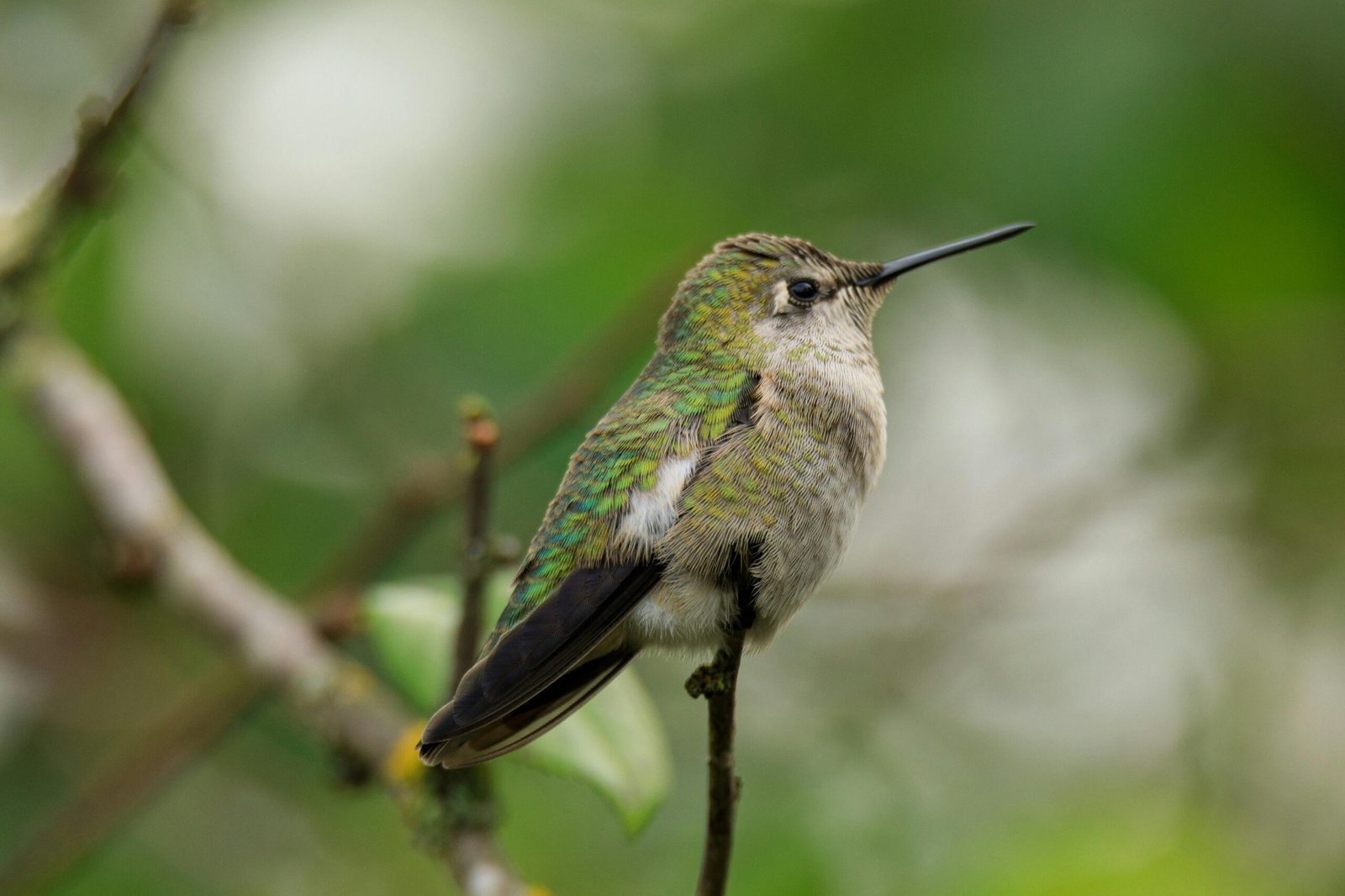Imagine creating a little slice of paradise for your eight-legged friend, where they can explore and thrive in a visually stunning environment. The question on everyone’s minds is, can tarantulas be kept in enclosures with artificial backgrounds? As we embark on this journey, let’s delve into the possibilities of enhancing your tarantula’s living space with captivating artificial backdrops and unlock a world of wonders for your arachnid companion.

Advantages of Using Artificial Backgrounds
Enhances Aesthetic Appeal
Artificial backgrounds can greatly enhance the aesthetic appeal of your tarantula enclosure. They come in a variety of designs, patterns, and colors, allowing you to create a visually appealing environment for your pet tarantula. These backgrounds can add depth and dimension to the enclosure, creating a natural and immersive habitat for your tarantula. Whether you choose a realistic photograph or a three-dimensional background, the overall aesthetic appeal of your pet’s enclosure can be greatly enhanced.
Provides Hiding Spots
One of the advantages of using artificial backgrounds in your tarantula enclosure is that they provide hiding spots for your tarantula. Tarantulas are naturally reclusive creatures and often seek out hiding spots in their natural habitat. By incorporating artificial backgrounds in the enclosure, you can create various nooks and crannies where your tarantula can hide, providing them with a sense of security and reducing stress levels. These hiding spots mimic natural crevices and foliage, allowing your tarantula to exhibit their natural behavior.
Simulates Natural Environment
Artificial backgrounds can help simulate a natural environment for your pet tarantula. Many backgrounds are designed to resemble the tarantula’s natural habitat, such as tropical forests or desert landscapes. By recreating these natural environments, you can provide your tarantula with a more comfortable and familiar living space. Additionally, artificial backgrounds can mimic natural lighting conditions, creating an environment that closely resembles the tarantula’s native habitat.
Considerations Before Using Artificial Backgrounds
Species Compatibility
Before incorporating an artificial background in your tarantula enclosure, it is important to consider the compatibility of the background with your tarantula species. Different tarantula species have varying habitat preferences and requirements. Some species prefer arboreal setups with vertical spaces and branches, while others thrive in terrestrial setups with ample ground space. Ensure that the artificial background you choose matches the natural habitat requirements of your specific tarantula species to promote their overall well-being.
Maintenance and Cleaning
Artificial backgrounds require regular maintenance and cleaning to ensure the health and hygiene of your tarantula. Dust and debris can accumulate on the background over time, compromising the cleanliness of the enclosure. It is important to regularly clean and sterilize the artificial background to prevent the buildup of harmful bacteria or contaminants. Additionally, some backgrounds may require specific cleaning methods or products, so it is important to follow the manufacturer’s guidelines to maintain the integrity of the background.
Substrate Selection
The substrate selection in your tarantula enclosure is another important consideration when using artificial backgrounds. Some backgrounds are designed to be used with specific types of substrates, such as sand or coco fiber. It is crucial to choose a substrate that is compatible with both the artificial background and your tarantula’s needs. The substrate should provide proper moisture retention, burrowing capabilities, and ease of cleaning. Research the substrate requirements of your tarantula species and consult with experts to ensure you choose the appropriate substrate for your enclosure setup.

Types of Artificial Backgrounds Available
Photographic Backgrounds
Photographic backgrounds are printed designs that can be attached to the back of the tarantula enclosure, creating a visually appealing backdrop. They often feature high-resolution images of natural habitats, such as forests, meadows, or caves. Photographic backgrounds can provide an instant and realistic transformation to the enclosure, giving your tarantula a visually stimulating environment.
3D Backgrounds
3D backgrounds are made from materials that create a three-dimensional effect in the enclosure. They are designed to mimic natural landscapes and usually offer a textured surface that enhances the appearance and depth of the enclosure. 3D backgrounds can add a sense of realism and provide additional hiding spots and climbing surfaces for your tarantula.
Custom-made Backgrounds
Custom-made backgrounds allow for personalized and unique enclosure setups. These backgrounds are typically constructed based on specific design preferences, incorporating elements such as rocks, branches, or foliage. Custom-made backgrounds can be tailored to the specific needs and preferences of your tarantula, creating a one-of-a-kind habitat.
Steps to Set Up Enclosure with Artificial Background
Clean and Sterilize the Enclosure
Before attaching the artificial background, it is essential to thoroughly clean and sterilize the tarantula enclosure. This helps remove any contaminants or residual substances that may be harmful to your tarantula. Cleaning can be done using a reptile-safe disinfectant or a mixture of water and vinegar. Rinse the enclosure thoroughly and allow it to dry completely before proceeding to the next step.
Attach the Artificial Background
Depending on the type of artificial background you have chosen, the attachment method may vary. Photographic backgrounds generally come with adhesive backing or can be attached using non-toxic glue or tape. 3D backgrounds usually require silicone adhesive or epoxy to ensure a secure attachment. Follow the instructions provided by the manufacturer carefully to effectively attach the background without posing any risk to your tarantula.
Arrange Decorative Elements
Once the artificial background is securely attached, it is time to arrange the decorative elements within the enclosure. Consider adding branches, rocks, or artificial plants to create a natural and visually appealing environment. These elements can provide additional hiding spots and climbing surfaces for your tarantula, enhancing their overall well-being. Take care to arrange the elements in a way that maximizes the available space while ensuring the safety of your tarantula.

Monitoring and Adjusting
Observing Tarantula Behavior
After setting up your tarantula enclosure with an artificial background, it is important to regularly observe and monitor your tarantula’s behavior. Pay attention to any signs of stress, aggression, or discomfort. If your tarantula displays any unusual behaviors or appears to be stressed, it may be necessary to make adjustments to the enclosure setup. This may include rearranging the decorative elements or modifying the lighting and humidity levels to better suit your tarantula’s needs.
Maintaining Optimal Humidity
Humidity levels in the tarantula enclosure play a crucial role in their overall health and well-being. It is important to maintain the optimal humidity range for your specific tarantula species. Artificial backgrounds can affect humidity levels within the enclosure, so regular monitoring and adjustments may be necessary. Use a hygrometer to measure the humidity levels and make necessary changes, such as misting the enclosure or adjusting ventilation, to ensure your tarantula’s comfort.
Monitoring Temperature
Temperature regulation is another important aspect of tarantula care. Artificial backgrounds can impact the temperature gradient within the enclosure. Monitor the temperature levels regularly and make adjustments as needed. Use a thermometer to measure the temperature at different areas of the enclosure to ensure a suitable range for your tarantula’s species. This may include adjusting heating or cooling methods, such as using heat pads or misting systems, to maintain the desired temperature range.
Common Mistakes to Avoid
Using Toxic Materials
One common mistake to avoid when using artificial backgrounds is choosing materials that may be toxic to your tarantula. Ensure that the background and any related adhesive or paint products are non-toxic and safe for use in tarantula enclosures. Some materials can release harmful chemicals or fumes when exposed to heat or moisture, posing a serious risk to your pet. It is important to conduct thorough research and consult with experts to ensure the safety of the materials used in your tarantula’s enclosure.
Overcrowding the Enclosure
Overcrowding the enclosure with excessive decorative elements or too many hiding spots can hinder your tarantula’s movement and access to essentials like food and water. Tarantulas need ample space to move around and ensure proper ventilation within the enclosure. Avoid cluttering the enclosure and provide enough open space for your tarantula to roam comfortably. It is important to strike a balance between providing hiding spots and maintaining a suitable living space for your tarantula.
Neglecting Regular Maintenance
Regular maintenance and cleaning are essential when using artificial backgrounds in tarantula enclosures. Neglecting maintenance can lead to the buildup of bacteria, pests, or mold, posing health risks to your tarantula. Set a regular cleaning schedule, including cleaning the artificial background, substrate, and decorative elements. This will help maintain a clean and safe environment for your pet tarantula, enhancing their overall health and well-being.

Potential Risks and Challenges
Tarantula Stress and Aggression
Some tarantulas may feel stressed or exhibit aggressive behavior when introduced to a new enclosure setup with an artificial background. They may initially perceive the changes as a threat or disruption to their territory. It is important to closely monitor your tarantula’s behavior during the transition period and provide additional hiding spots if necessary. Gradual acclimatization and patience are key to helping your tarantula adjust to the new environment and reduce stress levels.
Difficulty in Regulating Temperature
Artificial backgrounds can affect the temperature gradient within the enclosure, making it challenging to maintain the desired temperature range for your tarantula. It is important to closely monitor the temperature levels within the enclosure and adjust heating or cooling methods as needed. Consider using additional temperature-regulating equipment such as heat pads or misting systems to maintain a suitable temperature for your tarantula’s species.
Potential for Mold Growth
Inadequate ventilation or moisture control within the enclosure could lead to the growth of mold, which can pose health risks to your tarantula. The presence of mold can result from excessive moisture levels or poor circulation. Regularly monitor the humidity levels, ensure proper ventilation, and promptly address any mold growth by removing affected decorative elements or adjusting the enclosure setup as needed to prevent further growth.
Alternative Options to Artificial Backgrounds
Using Live Plants
If you prefer a more natural aesthetic, live plants can be a great alternative to artificial backgrounds. Live plants not only enhance the visual appeal of the enclosure but also provide improved air quality and serve as a source of microclimate regulation. Certain tarantula-safe plant species such as bromeliads or spider plants can be incorporated into the enclosure, offering additional hiding spots and a more organic habitat for your tarantula.
Natural Decorative Elements
Natural decorative elements, such as rocks, branches, or driftwood, can be used to create a natural and visually appealing environment for your tarantula. These elements not only provide climbing surfaces but also offer hiding spots and mimic the natural landscapes found in the tarantula’s native habitat. Ensure that the chosen elements are thoroughly cleaned and sterilized before introducing them to the enclosure to prevent the introduction of any potential contaminants.
Minimalistic Enclosure Design
For those who prefer a more minimalistic approach, a simple enclosure design without artificial backgrounds or extensive decor can be a viable option. This minimalist approach focuses on providing the tarantula with the essentials, such as suitable substrate, water dish, and hiding spots, while minimizing the visual clutter. This allows for easy maintenance and cleaning, while still providing a comfortable and functional living space for your tarantula.

Expert Opinions and Experiences
Testimonials from Tarantula Keepers
Many tarantula keepers find that using artificial backgrounds in their enclosures enhances the visual appeal and creates a more immersive habitat for their tarantulas. They appreciate the ability to simulate natural environments and provide hiding spots for their pets. Positive feedback often includes observations of reduced stress levels and increased activity and exploration in tarantulas housed in enclosures with artificial backgrounds.
Advice from Reputable Tarantula Breeders
Reputable tarantula breeders often recommend utilizing artificial backgrounds as a way to improve the overall aesthetics of the tarantula enclosures. They emphasize the importance of considering the specific needs and preferences of the tarantula species when choosing the background design and materials. Breeders also highlight the necessity of regular monitoring, maintenance, and adjustments to ensure the well-being of the tarantulas.
Insights from Tarantula Conservationists
Tarantula conservationists recognize the benefit of using artificial backgrounds, particularly in captive breeding programs and public displays. They believe that creating visually appealing and naturalistic habitats for tarantulas encourages a sense of connection and appreciation for these often-misunderstood creatures. Conservationists advocate for the responsible use of artificial backgrounds, emphasizing the need to prioritize the health and well-being of the tarantulas while stimulating interest and understanding among observers.
Conclusion
Using artificial backgrounds in tarantula enclosures can provide numerous advantages, such as enhancing aesthetic appeal, creating hiding spots, and simulating natural environments. However, it is crucial to consider species compatibility, maintenance and cleaning, and substrate selection before incorporating artificial backgrounds. By following the steps to set up the enclosure, monitoring and adjusting as needed, and avoiding common mistakes and potential risks, you can create a visually appealing and comfortable living space for your pet tarantula. Remember to explore alternative options like live plants, natural decor elements, or minimalistic enclosure design based on your preferences. Seek advice from experts, including testimonials from tarantula keepers, breeders, and conservationists, to ensure the best practices in creating a suitable and stimulating environment for your tarantula.
